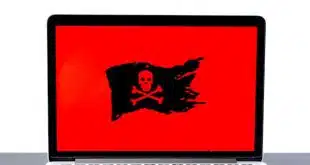New York-based SVPCO, architect of an image-exchange network serving some of the nation's largest banks, this week switched on a new service that allows users of its network to clear check images automatically. The new automated settlement function, which comes about a year after the network began flowing images, effectively eliminates the need for banks to use third-party clearing services and, officials say, positions the network for volume growth. “Of all the things we've done, this is the most important,” says Susan Long, senior vice president at SVPCO. “It really does change the game.” At the same time, SVPCO has re-christened its network, now calling it the SVPCO Image Payments Network to reflect the fact that the system offers payments settlement as well as data networking. Under the new arrangement, banks using the network agree to use its settlement procedures under its rules, with items entering settlement automatically as soon as they arrive at the electronic gateways, called distributed transfer agents, SVPCO has deployed at banks on its network. The new service, which is covered in SVPCO's existing pricing for image exchange, also includes a computerized view of all check activity in one place, including paper checks, images, and all adjustments. Pricing for image exchange runs in fractions of a penny per item. Long says the network was ready last year to introduce automated settlement for images, but its banks wanted to hold off until they had fully implemented check imaging and exchange. Before, users entered into separate arrangements with one another to handle settlement, often relying on the same third-party arrangements they use for paper-check clearing. Long says this introduces financial and operational risk, since it meant handing off check data to third parties. It also hampers growth, as banks tend to minimize the number of other banks they exchange with to keep risk and operational hassles under control. This, she says, may not matter now, with six institutions using the network for image exchange, but will figure heavily as a drag on growth later on. “In the future, if Wachovia has 1,000 [exchange] partners, they don't want to have separate meetings on how do we settle with each one,” Long says by way of example. “Now banks are starting to add more exchanges. That's what's going to grow our volume.” The network is currently averaging $2.5 billion a day in volume, on more than 250,000 items, roughly 85% of which are image-replacement documents (images converted to paper items at receiving banks not yet prepared to do end-to-end image exchange). That's up from 60,000 items daily in April. So far the majority of the volume consists of commercial checks, as banks seek to clear high-value items faster. Banks using SVPCO for image exchange include: JPMorgan Chase & Co., Bank of America Corp., Union Bank of California, National City Bank, Wachovia Corp., and KeyBank. Fifth Third Bank and Wells Fargo & Co. use it to traffic IRDs. Three more banks are preparing to join the network, Long says, with another half dozen expected to go live in the first quarter. SVPCO is a unit of The Clearing House, a consortium of 22 owner banks controlling 60% of the country's check volume, which acts as settlement provider for image exchange under the automated-settlement arrangement.
Check Also
Despite Increasing Ransomware Attacks, Fewer Victims Are Paying
Despite a spike in ransomware attacks, fewer companies are paying ransom demands to free their …





